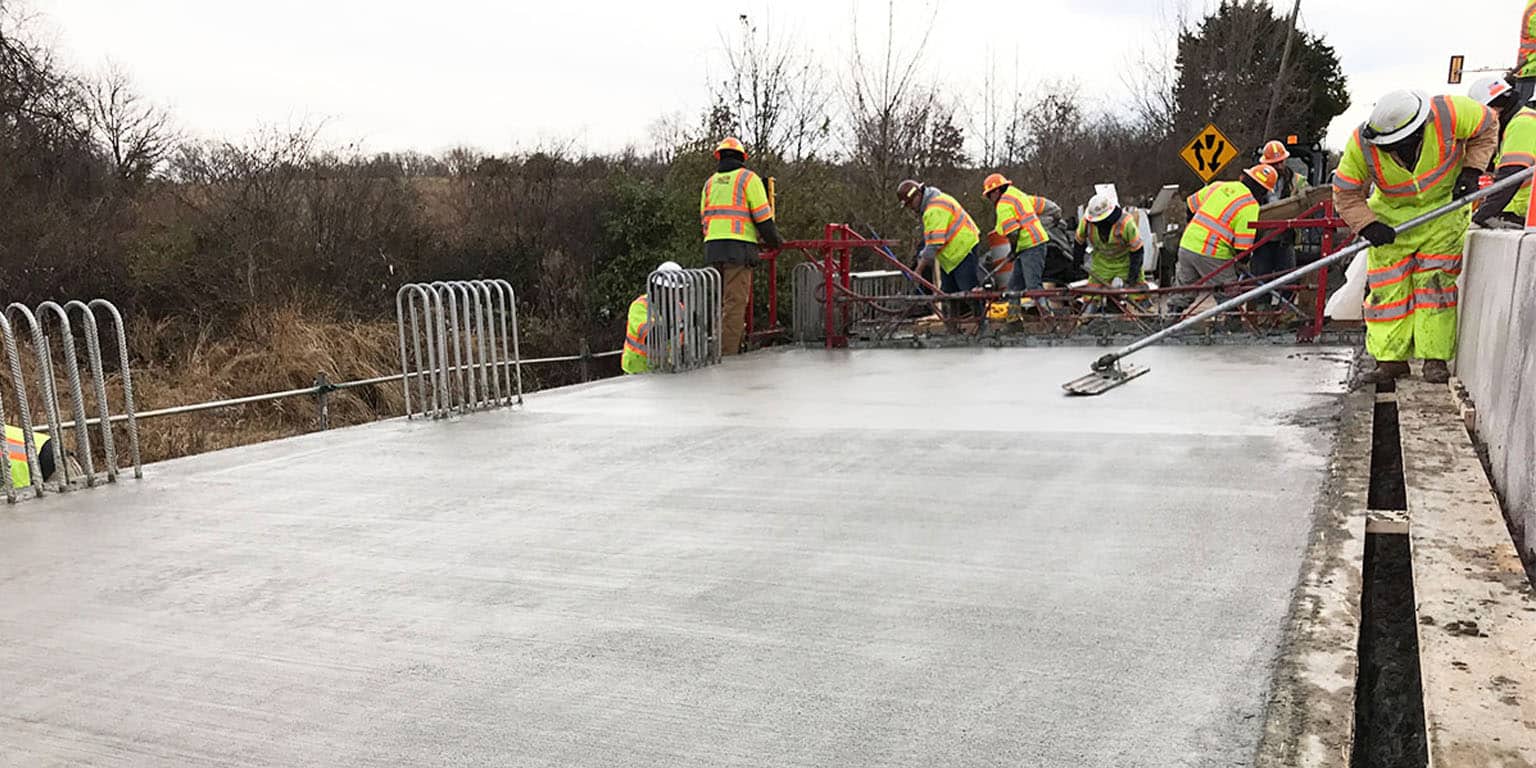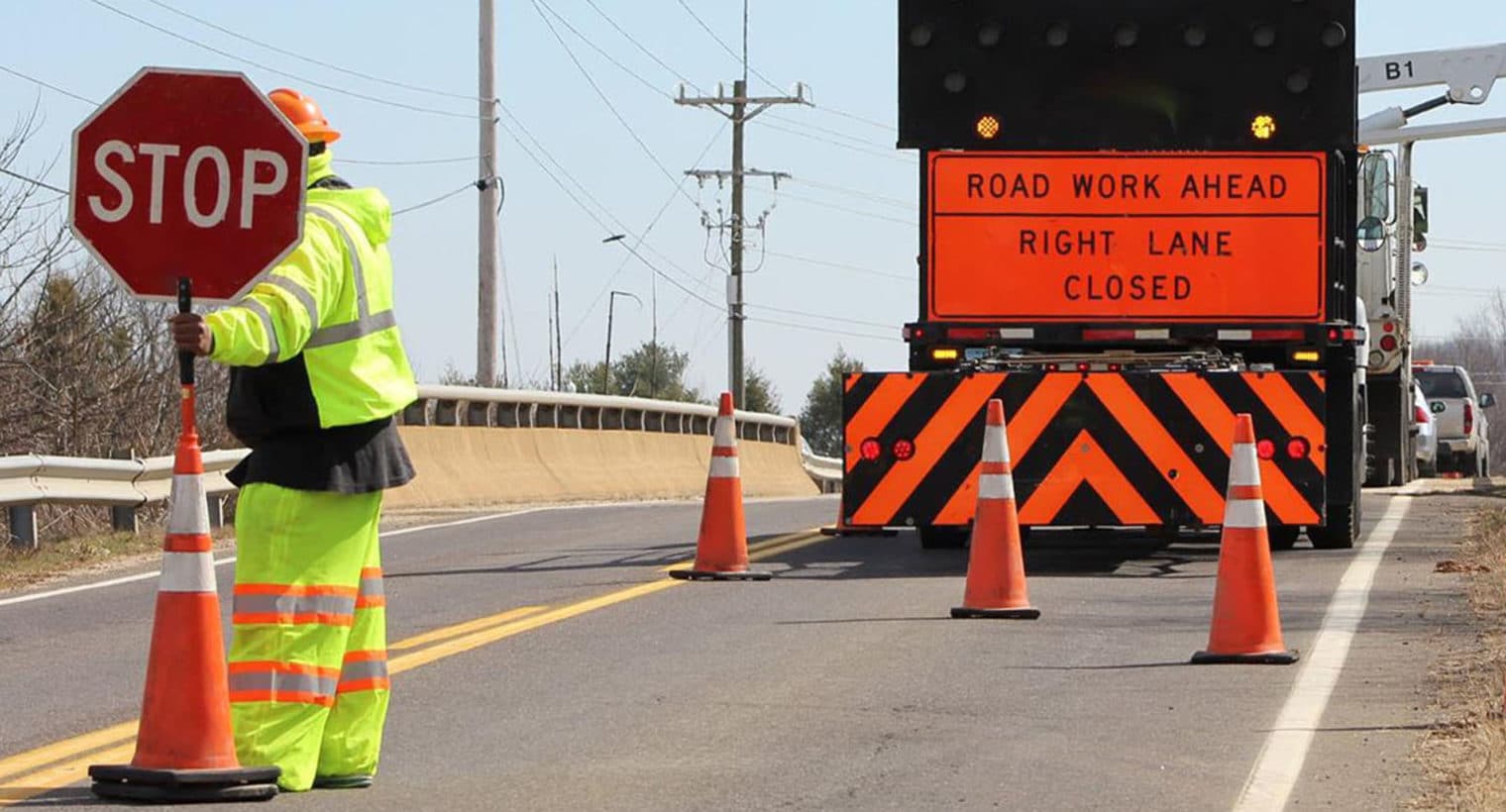Road construction, repairs, and maintenance – including that done on highway bridges – almost always requires a temporary traffic control set up. This can range from a small flagging operation, to a large scale lane closure consisting of TTC signs, arrow boards, message boards, barricades, and truck mounted attenuators.
Temporary Traffic Control (TTC), also referred to as maintenance of traffic, or MOT, involves the organization, arrangement, guidance, and control of both stationary and moving traffic, including pedestrians, construction workers, construction equipment, bicyclists, and all types of vehicles.
Why do we need Temporary Traffic Control? A good reason is provided in the MUTCD,
“When the normal function of the roadway, or a private road open to public travel, is suspended, TTC planning provides for continuity of the movement of motor vehicle, bicycle, and pedestrian traffic (including accessible passage); transit operations; and access (and accessibility) to property and utilities.
The primary function of TTC is to provide for the reasonably safe and effective movement of road users through or around TTC zones while reasonably protecting road users, workers, responders to traffic incidents, and equipment.
Of equal importance to the public traveling through the TTC zone is the safety of workers performing the many varied tasks within the work space. TTC zones present constantly changing conditions that are unexpected by the road user.”
The purpose of traffic control is to ensure the maintenance of continuous safe and effective pedestrian and vehicular traffic in and around a highway construction site. And this requires the use of temporary traffic control, or TTC, equipment.
When Road Construction Means Temporary Traffic Control
Whenever a maintenance of traffic, or MOT, plan is often required by contractors, so is temporary traffic control devices, or equipment.
These traffic control devices, also referred to as temporary traffic control devices, are essential for providing advanced warning to road uses by routing, merging, or diverting traffic flow as needed in and around roadway construction work. And it is as much for the safety of civilian drivers and pedestrians as it is for the construction crews themselves.
These Traffic Control Devices, serve a variety of purposes and come in a variety of shapes and configurations.
For example, the standard safety orange-and-reflective-tape traffic cones that are commonly seen in all types of work sites can be used to facilitate a temporary single lane closure or a temporary shoulder closure. A bit more exacting is a temporary lane shift to divert traffic into a single lane.
In addition to the ubiquitous cones there are channelizer drums, which can be used in a similar fashion as traffic cones.
The orange and reflective channelizer drums can be arranged to indicate a change of direction for lane closures, as well as for separation and crosswalk areas on roads or lanes during construction or repairs. They are also perfectly suited for use on highways or other areas where vehicles are traveling at high speeds.
Along with cones and drums, construction crews may also utilize barricades of various types.
Give Me a Sign: Towable Arrow Boards and Towable Message Signs
Many highway construction sites can also make use of lighted arrow boards to alert drivers of lane shifts or a change in the flow of traffic. These are especially essential after dark as cones and other devices may not be as clearly visible.
Along with the basic arrow signage, another essential piece of traffic equipment is a towable, lighted Message Board. These versatile devices are designed to display messages on multiple panels and inform road uses what to expect in the upcoming TTC zone while these boards are used during the day, they are especially used after dark to give clear instruction to motorist.
And, speaking of after dark, having reliable and sufficient lighting in and around highway construction projects is absolutely critical.
In addition to the wide variety of other traffic control equipment that McClain and Company makes available, our high-quality towable light towers provide optional lighting sources from either 4000 watt metal halide or 1200 watt LED lighting options in the same unit.
Despite the numerous traffic control elements required in an MOT plan, the danger of an errant driver is always a constant consideration.
To protect workers from such a danger, contractors often employ truck-mounted attenuator units to mitigate this. These large pieces of equipment serve the purpose of reducing the impact of an automobile collision. The truck-mounted attenuator, or TMA, is welded or bolted on the rear side of a work truck.
At McClain and Company, highway construction contractors can choose among several models of these traffic safety equipment vehicles.
Look to McClain and Co., Inc. for Your Traffic Equipment Rentals
Here at McClain, we believe in providing the absolute best in customer service. That includes offering our customers the absolute best in traffic and construction equipment rentals regardless of the state your in. Our Traffic Control crews are well versed and have a strong understanding of both the MUTCD as well as State Specific standard drawings.
The team at McClain and Company, along with owner Daniel McClain, also believe that your success is our success, which is why our goal is to do everything we can to help you select the right traffic equipment rentals for your Construction project.
Do you already know what types of equipment you need to rent? Then request a quote today and schedule your equipment rental with us!
In addition to Traffic Control Service and Device rentals, McClain and Company also provides construction services and equipment rental in several states, as well as under bridge, Hi-Rail, and aerial work platforms and access equipment.
If you have questions about our top-of-the-line traffic control equipment rentals or want to learn more about under bridge platforms and under bridge inspection unit rentals we offer, you can contact us here at McClain & Co., Inc., by calling 1.888.889.1284 or emailing [email protected].


